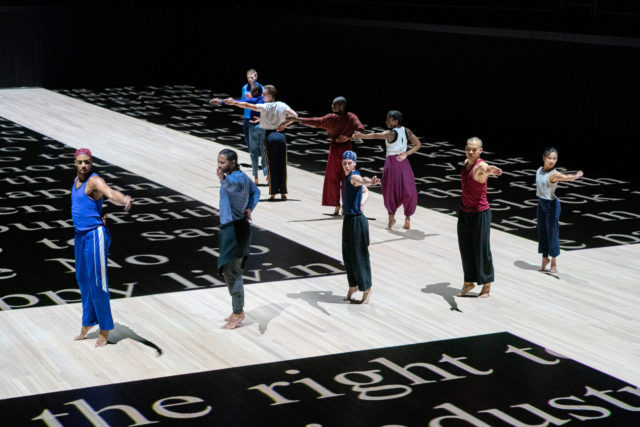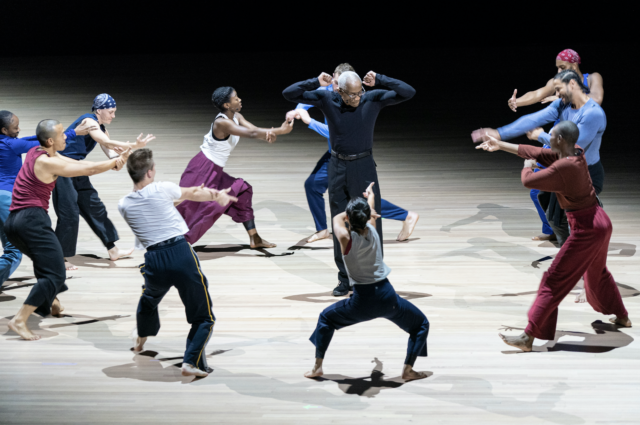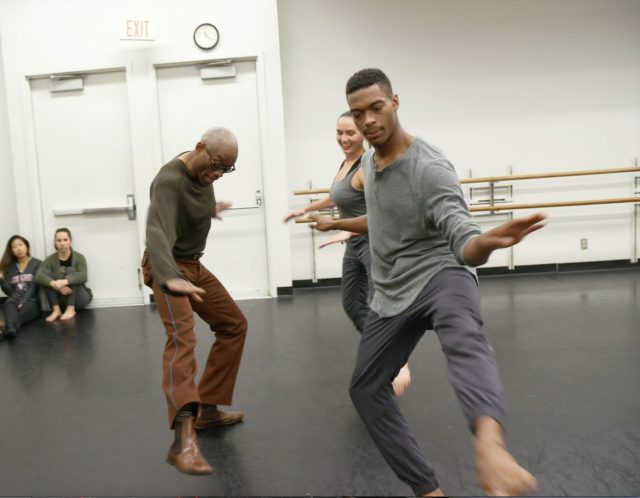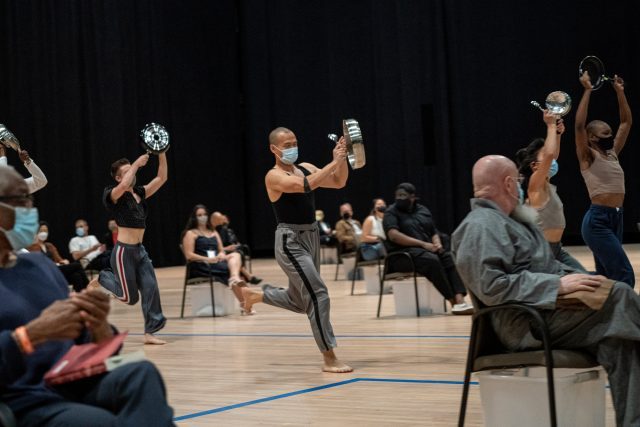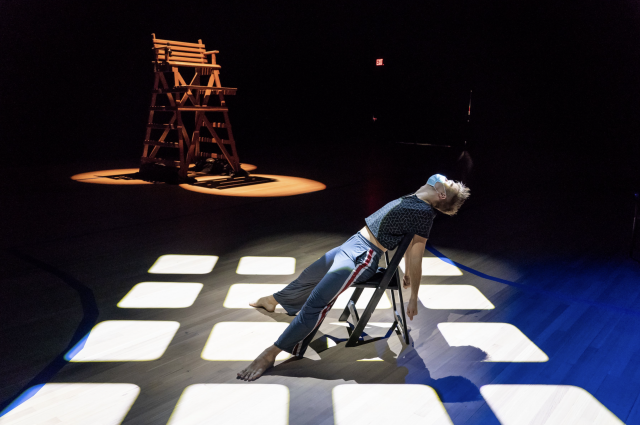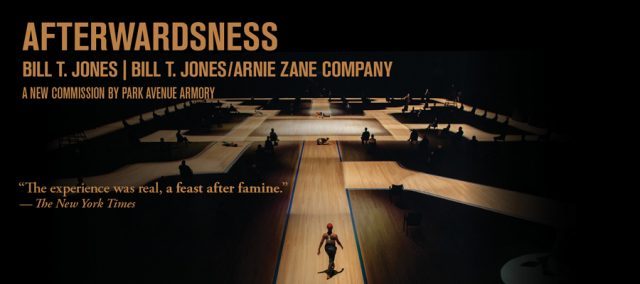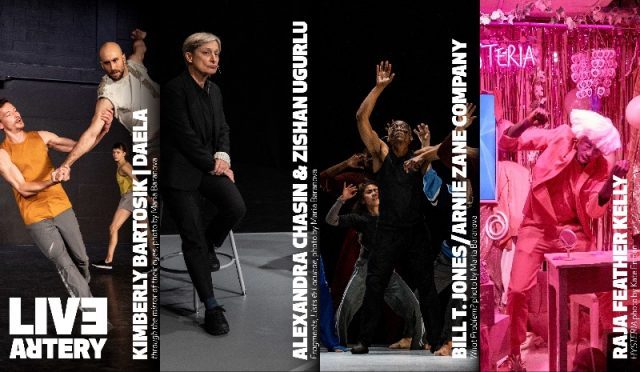
Bill T. Jones leads rehearsal for upcoming Watch Night at PAC NYC (photo by Stephanie Berger)
WATCH NIGHT
Perelman Performing Arts Center (PAC NYC)
251 Fulton St.
November 3-18, $52-$138
pacnyc.org
Bill T. Jones’s home base might be New York Live Arts, where he’s the artistic director, but he stages works all over New York (and the world). In August, Bill T. Jones/Arnie Zane Company presented the free, site-specific Dance for Sunset in Brookhaven, Long Island. In April, his Deep Blue Sea dazzled audiences at Park Avenue Armory, where he debuted the immersive Afterwardsness the previous year. And last month he was back at NYLA with Curriculum II, kicking off his troupe’s forty-first season.
So it’s no surprise that he is presenting the first dance work at the brand-new Perelman Performing Arts Center (PAC NYC) in Lower Manhattan, by Ground Zero. Running November 3-18, Watch Night will explore tragedy, justice, and forgiveness in these ever-more-difficult times. The multimedia work was conceived by director and choreographer Jones and librettist/poet Marc Bamuthi Joseph; the score is by Brooklyn musician and composer Tamar-kali.
The cast features approximately two dozen dancers portraying such characters as the Wolf, Super/Natural, and members of an Echo Chamber, with an eight-person ensemble including violin, viola, cello, bass, flute, oboe, and clarinet. The set is by Tony-nominated designer Adam Rigg, with costumes by Kara Harmon, lightning by Robert Wierzel, sound by Mikaal Sulaiman, and projections by Lucy Mackinnon.
In a program note, Jones lists dos and don’ts; for example:
DO NOT:
Create an event too easily digested in its desire to succeed by standards not of my making.
Be cowed by the city and this theater site’s precarious history in our fractious era.
Be oppressed by personal fear and anger.
Try to heal the world in this event.
Ignore each character’s worldview, individual psychological motivations that give them dimension and substance.
Attempt to be understood by all viewers and stake holders.
DO:
Acknowledge the privilege of this opportunity and the platform provided by the Perelman Performing Arts Center in its Inaugural Season.
Acknowledge this event is informed by real tragedies, real people, and real consequences.
Explore the potential of this new historic theater, built on contested land and a site of trauma.
Challenge my own taste and notions of abstraction and movement.
Attempt to “see this event” through the eyes of many people — different from myself and very much like me.
Stay alert, grateful, and hungry for joy!
Jones will be on hand for two postshow talkbacks, on November 9 with Joseph, Tamar-kali, and dramaturg Lauren Whitehead, moderated by rabbinical consultant Kendell Pinkney, delving into the creative inspiration behind the show, and on November 12, when Jones and guests from the Interfaith Center of New York will discuss faith and forgiveness. In addition, on December 4, Jones will speak with Joseph at NYLA as part of the ongoing “Bill Chats” series.
In her program note, Whitehead explains, “Every massacre has its moment. In the aftermath of every staggering act of violence we are inundated, for a time, with outrage and rallying cries, marches and memorials, public lament and lengthy speeches and great groanings of grief. And then, as is our way, we metabolize the grotesque. We will ourselves into movie theaters, send our children into schools again. We weep, we wail, and then we walk on. What our show is attempting to do is to ask ‘what if?’ What if we were unsatisfied by platitudes of forgiveness and forgetting? What if instead of moving on, we pointed our rage and discontent in a different direction?”
Don’t expect any easy answers to those challenging questions in what promises to be a memorable experience.
[Mark Rifkin is a Brooklyn-born, Manhattan-based writer and editor; you can follow him on Substack here.]
